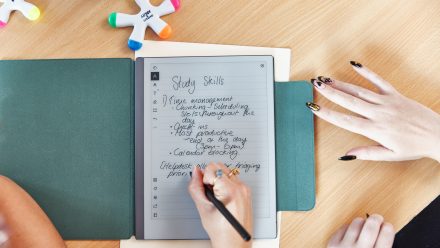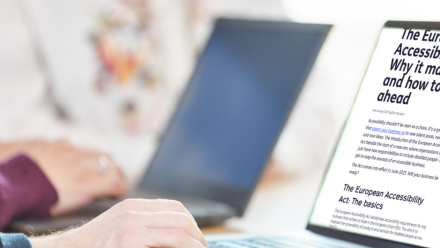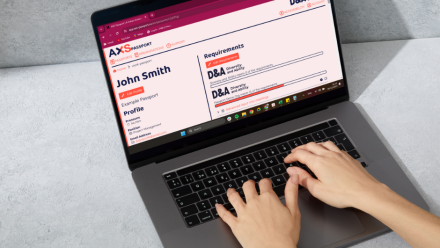Regression in the face of progress: social media accessibility matters
9th February 2023 by Piers Wilkinson
It’s not just no more daily possums; API bots made Twitter a more accessible space for disabled users and even pushed Twitter towards improving their own service.
As of today (February 9th), Twitter officially no longer supports free access to Twitter’s API.
Many people may be wondering: “what is an API and why should I care?” An API (or Application Programming Interface) is a service that is often critical for supporting marginalised communities to access and interact with society, especially on social media platforms like Twitter which still has one of the largest active international disabled communities.
Okay, but what does an API actually do?
An Application Programming Interface (API) is essentially a mechanism that enables two different bits of software to “talk” to each other based on predefined rules.In the context of Twitter, this means that a programmer can create a fun or useful bit of software that “talks” to Twitter.
Free API services are incredibly important for campaigners, activists, academics, especially in today’s world where the sheer volume of content can make accessing information can be incredibly difficult. They have even enabled voters to make more informed decisions during elections: the ACLU’s “District Time Machine” enables people to see how their congressional districts have been redrawn over the years with the intention to improve engagement with the process and rules associated with how their state revises districts.
Regardless of where you reside on the political spectrum,anything that increases informed engagement within our society and democracies is a valuable thing.
So why is Twitter’s API important for accessibility?
Disabled people’s access is still an afterthought when it comes to the design of our social media platforms, from their integration with critical assistive technologies like screen readers to the ability for users to write AltText image descriptions.
Twitter finally added the option for users to add AltText to the images they upload on the site 10 years after launching.But the number of users actually using the feature was still incredibly low, in part because the option to add AltText remained hidden away in the settings, and in part because many Twitter users didn’t know what AltText was, or why it was important.
Individual programmers who champion accessibility decided that, if Twitter wouldn’t step up to the plate, they would. They developed useful bots using the API services, many of which are still around today.
How to add Image Descriptions and Alt Text to your social media posts

Awareness Bots
At the forefront of raising awareness of social media accessibility is the A11y movement, which campaigns and advocates for greater awareness of digital accessibility.
Accounts such as @A11yAwareness and @GAADBot provide the digital community with helpful updates and reminders of the digital accessibility landscape and understanding of accessibility standards. There are even accounts specifically designed to prompt particular accounts; for example, Matt Eason’s @UKGovAltBot, @UKCouncilAltBot, and @USGovAltBot which automatically remind UK and US Government twitter accounts to add alt text on their tweets if they “forget” (despite the fact that in both the US and UK, public bodies are legally required to conform to digital accessibility regulations.
Usability Additions
On top of these reminder bots, there are many that offer features that enable many disabled people to interact and engage with Twitter itself.
Many of the usability updates that improved Twitter for disabled users originated from tools created by third parties. Just recently, Twitter added the option to be reminded about adding AltText before Tweeting an image. It’s an idea that evidently came from API bots such as @CaptionClerk, which manufactured a reminder system by direct messaging a user if they posted an image without AltTex.
Personally, one of my favourite API bots is @threadreaderapp, which ‘unrolls’ Twitter threads, enabling users to read them more easily. As a representative of disabled people in the UK, my use of social media can often include reading lengthy threads on topics such as proposed updates to legislation or disabled people sharing their experiences of discrimination. A thread reader ensures I don’t miss a key part of a thread, which is especially important when it comes to individuals sharing their experiences, where every detail is vital.
Disabled people are constantly denied our basic access rights in society; from critically important government announcements and guidance, to the local cafe sharing their new lunch menu, to the funny cat photo being shared around the office. Twitter API bots take on one of the biggest administrative burdens and grievances faced by disabled people in online spaces: constantly reminding others of our rights to accessibility. Without them, we lose an invaluable tool that provides a simple and efficient way of removing just one drain on our already limited energy and time.

Impact
The developers behind these API accessibility bots aren’t nefarious actors determined to bring down Twitter, but rather individuals who noticed Twitter was failing its disabled users like me and went out of their way to make it better, at their own cost, no less!
Additionally, a good proportion of the accessibility bots were created by other disabled people or those connected to our community. Twitter’s new move to put its API behind a pay wall, in effect charging disabled people for access to tools that we developed to support our own community. Despite bringing immense value to Twitter, creating community spaces that boosted Twitter’s reach and success, allies and disabled members are now expected to pay hundreds, if not thousands, per month for the privilege of doing something Twitter should have been doing decades ago!
Unlike many others who have already left Twitter to join an alternative platform like Mastodon, many of us disabled people just can’t do similar; it has taken our community almost two decades of hard-won progress to get Twitter to become the semi-accessible platform it now is. We simply can’t just start over on these new platforms that still lack many of the essential features we need to be able to engage.
Disabled people often feel isolated and cut off from “real” world social spaces due to physical and attitudinal access barriers. For many of us, social media provided an opportunity to socialise, while outside of the digital world we felt trapped in our own houses. It’s crucial that the future of social media is accessible.
Now, one could argue that this totally-not-a-blatant-money-grab change is purely an oversight; that Twitter’s decision-makers have just the essential role the free API service provides for disabled people’s inclusion. After all, being overlooked and forgotten is certainly something that we in the disabled community are used to.
But unfortunately, this is just another brick in the inaccessibility wall that Twitter’s management is building. Only in November we saw the new CEO’s gutting of the accessibility team and removal of live captions from Twitter Spaces.
It is becoming clearer and clearer Twitter’s new direction is a regression in the face of hard-won progress for disabled people’s access and inclusion.
Making your social media and communications accessible and inclusive means demonstrating to your networks that you’re truly committed to inclusive practice. Find out how you can embed inclusive communications in your work.


